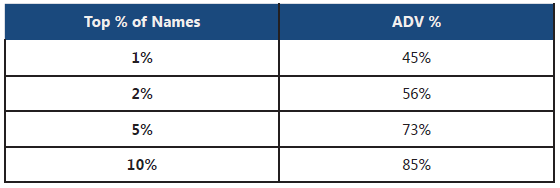Introduction

Image: www.europeanbusinessreview.com
In the dynamic realm of options trading, liquidity holds paramount importance, influencing both the efficiency and accessibility of market transactions. However, there are times when liquidity wanes, creating a tempest of challenges for traders. This article aims to unravel the intricacies of trading amidst a lack of liquidity, providing valuable insights into risk management and maximizing outcomes in such turbulent market conditions.
Understanding Liquidity in Options
Liquidity refers to the ease with which an asset can be bought or sold without significantly impacting its price. In options markets, liquidity is tied to the number of orders available for a specific option at any given moment. When there is high liquidity, traders can enter and exit positions quickly and efficiently. Conversely, when liquidity is lacking, the market becomes less responsive, and transactions may become more difficult and costly.
Causes of Lacking Liquidity
Several factors can contribute to a lack of liquidity in options, including:
- Volatility: Extreme market volatility, whether surging or plummeting, can disrupt liquidity by creating uncertainty and reducing trading appetite.
- Low Volume: Options with low trading volume experience less market activity, leading to a shortage of available orders.
- Short Expirations: Options with short expirations tend to have lower liquidity as there is less time for traders to establish positions.
- Unusual News or Events: Unforeseen events or company-specific news can create sudden liquidity issues, either by spiking volume or drying up demand.
Impact of Lacking Liquidity
Trading in options with inadequate liquidity poses unique challenges:
- Increased Transaction Costs: A lack of liquidity can lead to wider spreads between the bid and ask prices, resulting in higher transaction costs.
- Delayed Executions: Orders may take longer to fill or may not execute at all if there aren’t enough orders on the other side of the trade.
- Reduced Profit Potential: Limited liquidity can cap profit opportunities as traders may be unable to sell their options for a favorable price when required.
- Increased Risk: Lack of liquidity can create a heightened sense of risk, as traders may not be able to adjust their positions or exit quickly if market conditions worsen.
Managing Lack of Liquidity
Despite these challenges, there are strategies traders can employ to manage the risks associated with lack of liquidity:
- Identify Potentially Illiquid Options: Research historical volume and volatility patterns to identify options that may experience liquidity issues.
- Choose Liquid Strike Prices: Opt for strike prices that align with prevalent market sentiment and attract higher trading volume.
- Consider Longer-Term Options: Options with longer expirations tend to offer greater liquidity as they provide more time for market conditions to stabilize.
- Monitor Market Depth: Use market depth tools to assess the availability of orders at different price levels to gauge liquidity before trading.
- Be Patient and Flexible: Recognize that it may take time to fill orders in illiquid markets. Adjust trading strategies and time frames accordingly.
Conclusion
Trading in options with lacking liquidity presents distinctive hurdles that require a proactive and informed approach. By understanding the causes and impact of illiquidity, traders can arm themselves with strategies to mitigate risks and navigate these turbulent market conditions more effectively. Remember, embracing the dynamic nature of options trading and adapting to its complexities empowers traders to seize opportunities and minimize losses even when liquidity eludes the market.

Image: theforexscalpers.com
Trading Lack Of Liquidity In Options

Image: www.swanglobalinvestments.com






